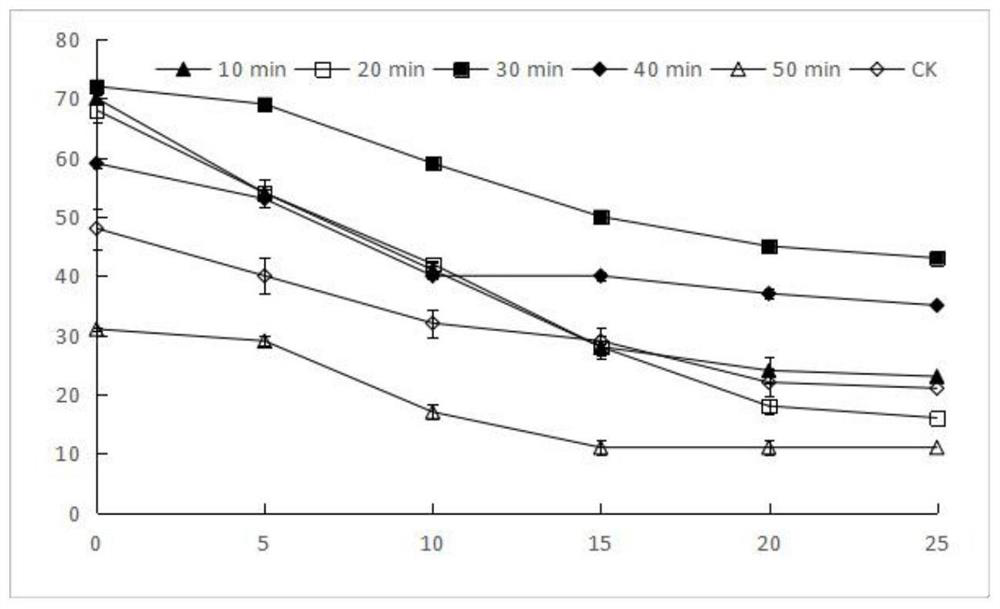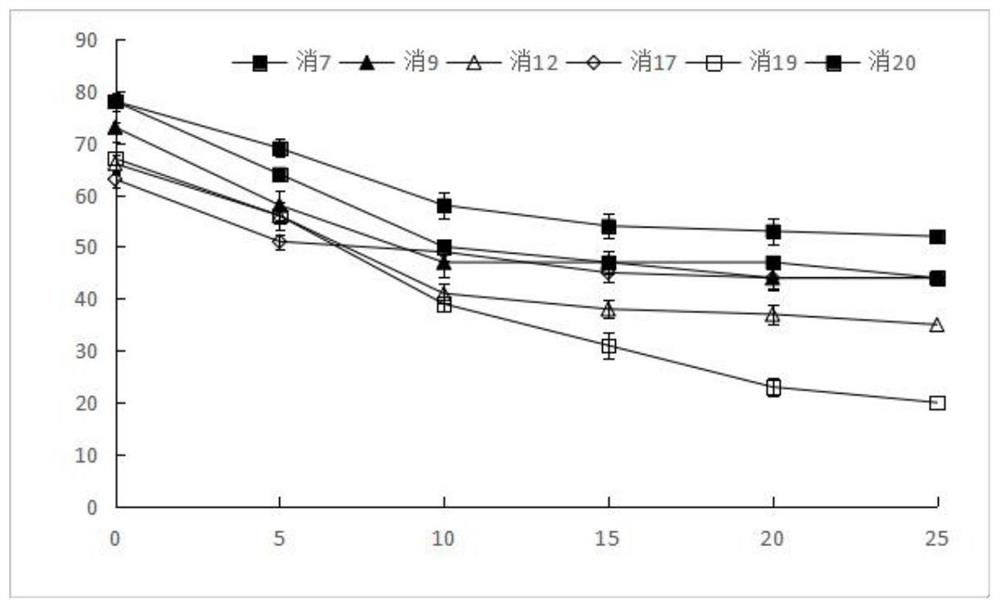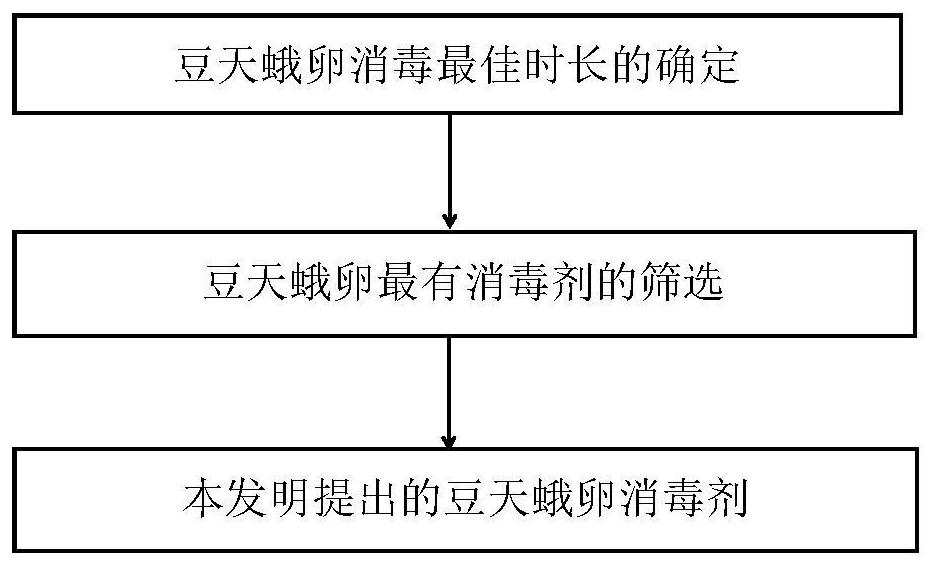Disinfectant for clanis bilineata tsingtauica eggs
A technology of bean hornworm and disinfectant, which is applied in the field of artificial breeding of resource insects, can solve the problems of soaking time, types of disinfectants, hidden dangers of good operation of the bean hornworm market, and uneven quality of bean Dan, so as to achieve standardized breeding and good disinfection The effect, the effect of the simple preparation method
- Summary
- Abstract
- Description
- Claims
- Application Information
AI Technical Summary
Problems solved by technology
Method used
Image
Examples
Embodiment 1
[0014] Example 1 Effects of Different Disinfection Time Lengths on the Growth and Development of Bean Hornmoth Eggs
[0015] Hydrochloric acid solution (mass fraction 38%) and formaldehyde solution (mass fraction 37%) are mixed in equal volumes and then diluted with water at a volume ratio of 1:10 to form a disinfectant. After the ovum in the constant temperature incubator is cultivated to the age of 5 days, it is put into a plastic net bag by 30, and the mouth of the net is fastened to prevent the eggs from spilling. The disinfection time is divided into 5 gradients of 10min, 20min, 30min, 40min and 50min. Pour 400ml of disinfectant solution into a 500ml beaker, immerse the small mesh bag containing the eggs of bean hornworm, and treat 3 mesh bags in a gradient for each time length, and rinse the mesh bag with clean water immediately after the treatment, so as to rinse only with clean water The 3 mesh bags were used as the control group, which were wiped lightly with filter ...
Embodiment 2
[0022] Example 2 Effects of different disinfection durations on the growth and development of 25-day-old larvae of the horn moth
[0023] The 25-day-old larvae developed by the Manduca bean moth ovum after different durations of treatment in Example 1 are carried out to body length and body weight statistical analysis, and the impact of different disinfection durations on the 25-day-old larvae growth and development of Manduca beanus.
[0024] The results are shown in Table 2.
[0025] Table 2 Effects of disinfection time on the development of 25-day-old larvae
[0026]
[0027] It can be seen that the body length and body weight of the 25-day-old larvae of Hormus moth were relatively consistent after being treated for different lengths of time. After 30 minutes of treatment, the body length reaches the maximum, which is 8.02cm. The second is to process 40min and 10min respectively, and the body length is respectively 7.74cm and 7.66cm. The body length of 25-day-old larv...
Embodiment 3
[0028] The influence of embodiment 3 different disinfectants on the growth and development of bean hornworm eggs
[0029] Mix hydrochloric acid (mass fraction 38%), hydrogen peroxide (mass fraction 31%), August 4th disinfectant, and formaldehyde solution (mass fraction 37%) individually or in twos in equal volumes, and use distilled water as the solvent at a ratio of 1:5, 1 :10, 1:20 volume ratio dilution, thus forming different disinfectants. The composition and dilution ratio of each disinfectant are shown in Table 3.
[0030] Table 3 Composition and dilution ratio of each disinfectant
[0031]
[0032]
[0033] The method is as in Example 1. On the basis of disinfection for 30 minutes, different disinfectants are used to sterilize the eggs of Hornbus moth. Each disinfectant treats 3 mesh bags, and after the disinfection is completed, they are bagged in the community. Comparing the hatching rate and the survival rate difference of different day-old eggs after being t...
PUM
 Login to View More
Login to View More Abstract
Description
Claims
Application Information
 Login to View More
Login to View More - R&D
- Intellectual Property
- Life Sciences
- Materials
- Tech Scout
- Unparalleled Data Quality
- Higher Quality Content
- 60% Fewer Hallucinations
Browse by: Latest US Patents, China's latest patents, Technical Efficacy Thesaurus, Application Domain, Technology Topic, Popular Technical Reports.
© 2025 PatSnap. All rights reserved.Legal|Privacy policy|Modern Slavery Act Transparency Statement|Sitemap|About US| Contact US: help@patsnap.com



